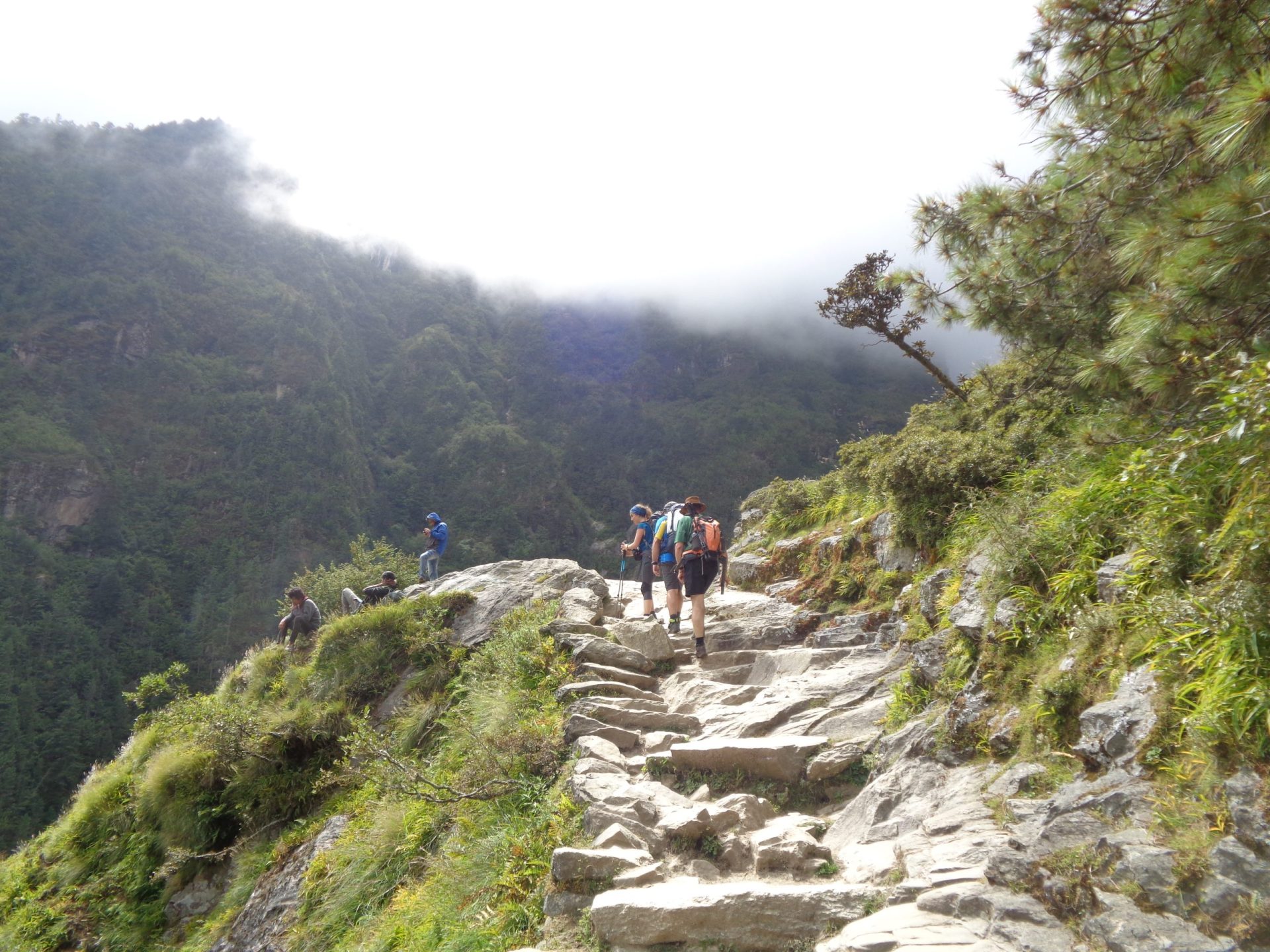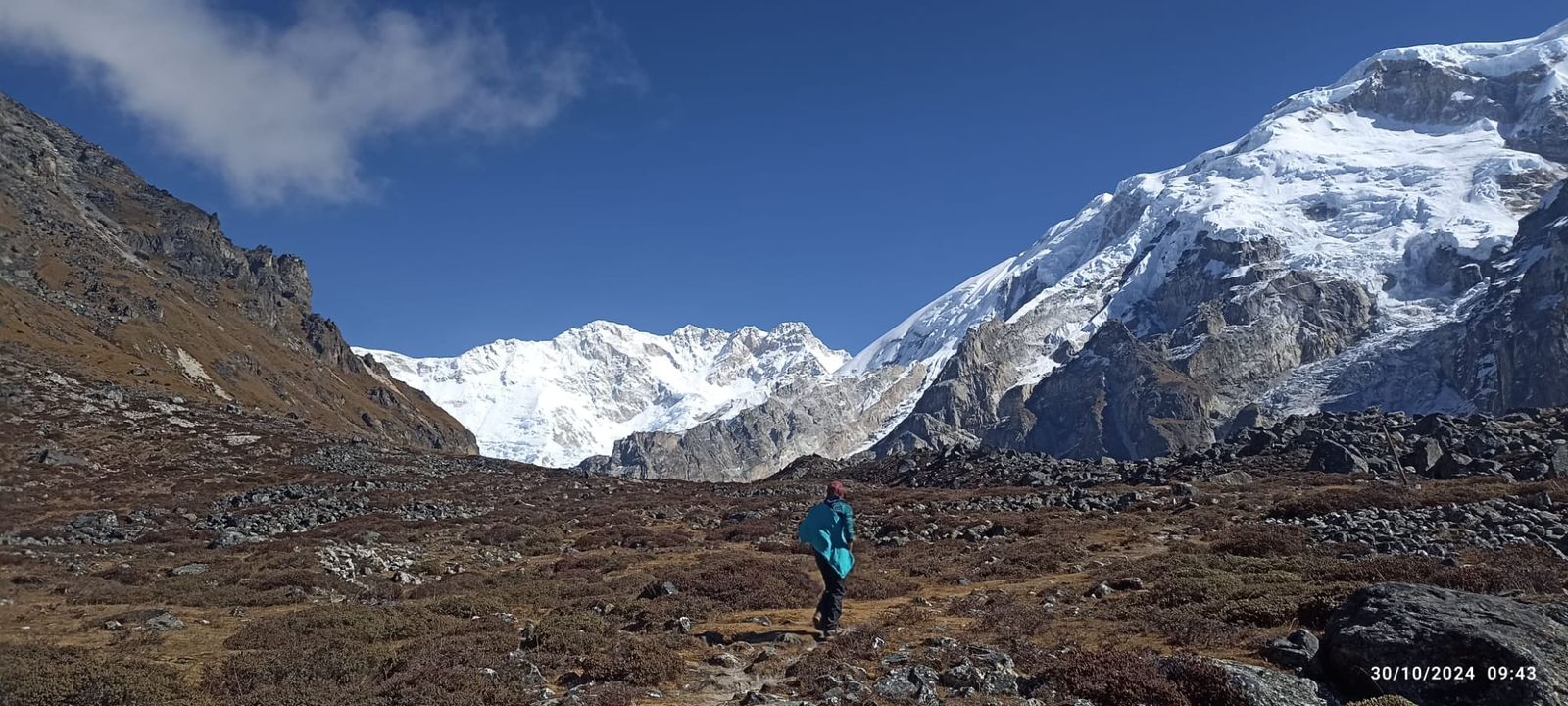
Kanchenjunga Region Trekking: Explore Nepal’s Remote Eastern Himalayas
Embark on an unforgettable journey through the Kanchenjunga region, one of Nepal’s most remote and pristine trekking destinations. Home to Mount Kanchenjunga—the world’s third-highest peak at 8,586 meters—this region offers trekkers a unique blend of breathtaking landscapes, rich biodiversity, and vibrant cultural experiences.
The Kanchenjunga region trek offers a challenging yet profoundly rewarding experience, immersing adventurers in one of Nepal’s most remote and pristine landscapes. The journey traverses a diverse array of terrains, from lush subtropical forests and terraced fields to alpine meadows and towering Himalayan peaks.
The Kanchenjunga region trekking trail winds through the Kanchenjunga Conservation Area. This region is a haven for biodiversity, home to rare and endangered species such as the red panda, snow leopard, Himalayan black bear, and musk deer. Bird enthusiasts may spot the golden-breasted fulvetta, blood pheasant, and snow partridge among the 252 recorded avian species.
Cultural encounters enrich the trekking experience, as the path passes through traditional villages inhabited by ethnic groups like the Limbu, Rai, and Sherpa communities. You can engage with locals, observe traditional farming practices, and visit ancient monasteries adorned with prayer flags and chortens, gaining insight into the region’s rich cultural tapestry.
Due to its remote location and limited infrastructure, the Kanchenjunga region trek remains one of Nepal’s least-traveled routes, offering a truly solitary and immersive experience. The trail winds through secluded villages and pristine wilderness, far removed from the crowds of more popular treks.
The lack of modern amenities and sparse communication networks enhances the sense of isolation, allowing you to engage deeply with the natural surroundings. This off-the-beaten-path journey rewards you with unspoiled landscapes, authentic cultural encounters, and a profound sense of tranquility.
Why Trek in the Kanchenjunga Region?
- Untouched Natural Beauty: Traverse through the Kanchenjunga Conservation Area, encompassing lush forests, alpine meadows, and high-altitude wetlands. This area is part of the Sacred Himalayan Landscape, a joint initiative by WWF Nepal and the International Centre for Integrated Mountain Development.
- Rich Biodiversity: Encounter rare wildlife such as the elusive snow leopard, endangered red panda, Himalayan black bear, clouded leopard, and Assamese macaque.
- Cultural Immersion: Experience the traditions of the Rai and Limbu communities in mid-hill villages and explore remote Tibetan settlements on semi-arid plateaus.
- Challenging Adventure: Ideal for seasoned trekkers seeking solitude and a physically demanding trek away from the crowded trails of Everest and Annapurna.
Trekking Routes in the Kanchenjunga Region
- Kanchenjunga North Base Camp Trek: A challenging route leading to Pangpema, offering panoramic views of the north face of Kanchenjunga.
- Kanchenjunga South Base Camp Trek: Explore the Yalung Glacier and enjoy close-up views of the southern face of the mountain.
- Kanchenjunga Circuit Trek: Combine both base camps in a comprehensive circuit, crossing high mountain passes like Sele La and Mirgin La, and experiencing diverse terrains and cultures.
Best Time to Trek
The ideal seasons for trekking are spring (March–May) and autumn (mid-September–November), when the weather is stable and mountain views are at their best. Most tea houses and homestays are open during these months. Outside this window, services may be limited, and greater self-sufficiency is required.
Accommodation and Logistics
While the Kanchenjunga region is less developed than other trekking areas, tea houses and homestays are available along most routes during the trekking season. Outside of these seasons, these lodges may be closed. Due to the remoteness and challenging terrain, it’s recommended to trek with a registered guide or through a reputable trekking agency.
Permits Required
Trekking in the Kanchenjunga region requires a Restricted Area Permit and a Kanchenjunga Conservation Area Permit.
For detailed itineraries, permit assistance, and expert guidance, contact Wind Horse Tours to plan your Kanchenjunga region trekking adventure.
Kanchenjunga Circuit Trek – A remote Himalayan Journey The Kanchenjunga Circuit Trek is one of Nepal’s most remote and...



